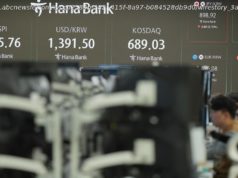Friday, Aug. 26, 2022 — There are two big questions about the plan to reduce student debt. First, will it, as critics claim, significantly increase inflation? The answer, if you do the math, is a clear no. Second, is it a good policy? The answer should be: Compared with what?
EDITOR’S NOTE: Paul Krugman is a New York Times columnist and a distinguished professor at the City University of New York Graduate Center. He won the 2008 Nobel Memorial Prize in Economic Sciences for his work on international trade and economic geography.
On Wednesday, President Joe Biden announced a plan to reduce most students’ debt by $10,000, with lower-income students eligible for twice that amount. The debt forgiveness was much less generous than many progressives wanted but more generous than many expected. Assuming it survives legal challenges, it will be a big deal for millions of Americans, although the overall economic impact will, as I’ll explain, be limited.
There are two big questions about this plan. First, will it, as critics claim, significantly increase inflation? The answer, if you do the math, is a clear no. Second, is it a good policy? The answer should be: Compared with what?
About the math: What you need to have is a sense of scale. If you’re worried about inflation, the relevant number here isn’t the eventual cost to taxpayers, which might be several hundred billion dollars. It is, rather, the effect on private spending. And I just don’t see any way to claim that this effect will be large.
Consider the fact that before the COVID-19 pandemic — that is, before the government paused required payments on federally held student-debt payments — total receipts from the federal loan program were about $70 billion a year. Since most student debt is in the form of large loans, much more than $10,000, these payments will be reduced by much less than that total. At most, then, we’re talking about tens of billions a year in a $25 trillion economy.






